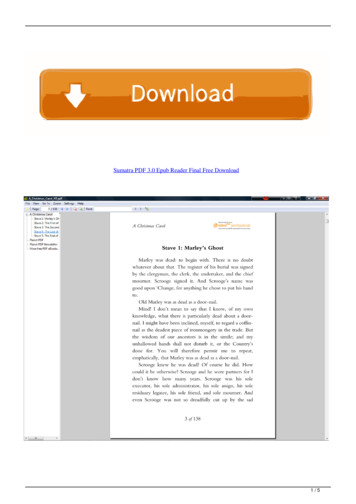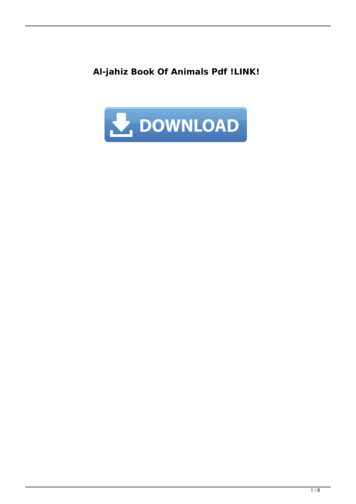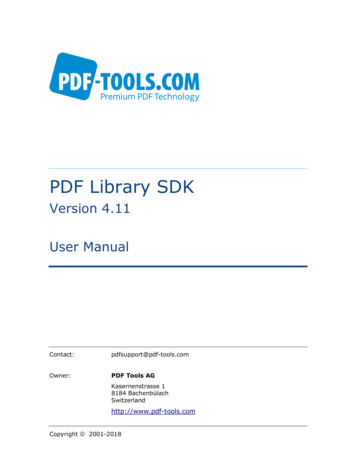
Transcription
02 02-15102 02-15SUBJECTDATEEPA10 and GHG14 Diesel Oxidation Catalyst Face CleaningFebruary 2015Additions, Revisions, or UpdatesPublication Number / TitleDDC-SVC-MAN-0084PlatformSection TitleEPA10 and GHG14DD Platform Diesel Oxidation CatalystFace CleaningAll information subject to change without notice.02 02-15Copyright 2015 DETROIT DIESEL CORPORATIONChangeUpdated procedure to include GHG14 information.3
2 EPA10 and GHG14 Diesel Oxidation Catalyst Face Cleaning2EPA10 and GHG14 Diesel Oxidation Catalyst Face CleaningThe Diesel Oxidation Catalyst (DOC) Face Plug Cleaning service routine can be run to unclog the front face of the DieselOxidation Catalysts. It can be used on a 1-Box emissions package or Two-box option.Before performing this service routine, the cause of the DOC plugging should be found and corrected. Typical items that cancause this are vehicle duty cycles that are stop-and-go, have excessive idle time, have stationary PTO operation, or have ahardware issue with the engine or vehicle. Perform the "ATD Checklist" to review these items and correct them beforerunning this service routine.The following engine conditions must be met before this routine can be performed: Engine is at base idle speedNOTE: You MUST use DiagnosticLink 8.0 with Service Pack 1 (or higher) to run the service routine.Engine software requirements are: EPA10: MCM software 7.7.1.47 (or higher) and ACM software 8.7.0.105 (or higher). Corresponding CPC software is R22(or higher). GHG14: MCM software 4.7.0.0 (or higher) and ACM software 5.57.0.0 (or higher). Corresponding CPC software is R34(or higher). For DT12 units, TCM software NAMT070700 (or higher).NOTICE: Do not run the service routine if the DOC inlet pressure is greater than 20 kPa (2.9 psi). If the pressureis above that, replace the DOC/SCR module (1-box) or DOC (Two-box option). This is to protect the engine andturbocharger from excessive exhaust temperatures.This service routine will run for approximately 4 hours and 45 minutes. You MUST remain with the vehicle for the entireprocedure.If possible and safe to do so, warm up the engine to operating temperature before running the service routine.To improve the chances of a successful procedure, engine load needs to be as low as possible. Turn off all unnecessaryaccessories in the truck such as the air conditioner, extra lighting, PTO, etc. Note that setting the HVAC system on Defrosttypically turns on the air conditioner, so turn off the HVAC system or select a different setting.Check as follows:WARNING: PERSONAL INJURYDiesel engine exhaust and some of its constituents are known to the State of California to causecancer, birth defects, and other reproductive harm. Always start and operate an engine in a well ventilated area. If operating an engine in an enclosed area, vent the exhaust to the outside. Do not modify or tamper with the exhaust system or emission control system.WARNING: PERSONAL INJURYTo avoid injury before starting and running the engine, ensure the vehicle is parked on a levelsurface, parking brake is set, and the wheels are blocked.1. Start the engine and allow it to idle at base (600 rpm) idle speed.2. Connect DiagnosticLink 8.0 with Service Pack 1 (or higher).3. Navigate to the Actions menu (1) / Aftertreatment (2) / DOC Face Plug Cleaning (3).4All information subject to change without notice.Copyright 2015 DETROIT DIESEL CORPORATION 02 02-15
02 02-154. Once the panel opens, click on the Start button (1) in the bottom right hand corner to start the routine.5. Once the Start button is clicked 'On', the Actual DPF zone will shift in to zone 2 (1).All information subject to change without notice.02 02-15Copyright 2015 DETROIT DIESEL CORPORATION5
2 EPA10 and GHG14 Diesel Oxidation Catalyst Face Cleaning6. Read the dialog prompt message in the button left hand corner. Press and hold the regeneration dash switch located onthe dash for five seconds (2). See figure above.7. When the regeneration dash switch is depressed, the DPF Regen Switch Status Box will turn green.8. Once the switch has been depressed for five seconds, the engine rpm will ramp up to about 1275 rpm (EPA10) or 1250rpm (GHG14).6All information subject to change without notice.Copyright 2015 DETROIT DIESEL CORPORATION 02 02-15
02 02-159. The Intake Throttle Valve (ITV) (1) and Jake Brake 1 (PWM13) may begin cycling (temperature dependent) to raiseDOC Inlet Temperature. This will cause engine rpm to fluctuate. The engine will run and sound abnormal during thistransition point but this condition is COMPLETELY NORMAL.10. After the engine warms up, the ITV should become steady. The Jake Brake 1 (PWM13) will be steady at 100%. Enginerpm should then become stable about 1275 rpm (EPA10) or 1250 rpm (GHG14).11. Monitor DOC inlet temperature (1). The DOC inlet temperature should be greater than 400 C (750 F). Ambienttemperature will have a large impact on DOC inlet temperature. If it is not above 400 C (750 F), block off part of theradiator. Be careful that coolant temperature does not go high enough to cause a Check Engine Light. If 400 C (750 F)DOC inlet temperature is not reached, the service routine will abort. See Figure below. Note the DOC inlet temperature(1) is too low in this picture.All information subject to change without notice.02 02-15Copyright 2015 DETROIT DIESEL CORPORATION7
2 EPA10 and GHG14 Diesel Oxidation Catalyst Face Cleaning12. After four hours of run time, the engine rpm will ramp down to 1100 rpm (2) and a standard DPF Parked Regenerationwill occur automatically. The Parked Regeneration process will take about 45 minutes.13. If the DOC inlet pressure ((1) see above figure) is within the expected range, the routine will complete. If not, theservice routine will abort.14. After the DPF Parked Regeneration has completed, the engine will ramp down to 600 rpm to cool down.15. The service routine is complete when actual engine speed is at 600 rpm (1).8All information subject to change without notice.Copyright 2015 DETROIT DIESEL CORPORATION 02 02-15
02 02-1516. Examine the DPF Parked Regeneration portion of the log file. Confirm DOC inlet pressure has dropped from theprevious level and is less than these approximate values.a. EPA10: 8 kPa (1.2 psi) for a 1-box or 13 kPa (1.9 psi) for a Two-box option.b. GHG14 TC: 6 kPa (0.9 psi) for a 1-box or 13 kPa (1.9 psi) for a Two-box option.c. GHG14 15AT: 7.5 kPa (1.1 psi) for a 1-box or 13 kPa (1.9 psi) for a Two-box option.d. GHG14 13: 5kPa (0.7psi) for a 1box or 13 kPa (1.9 psi) for a Two-box option.NOTE: A full DPF (end-of-life use) can replicate a plugged DOC (10kPa for a 1-box and 13kPa for a Two-boxoption). This may be an issue on higher mileage units.17. Confirm the original complaint (noisy ATS, Check Engine Light, etc.) has been resolved.All information subject to change without notice.02 02-15Copyright 2015 DETROIT DIESEL CORPORATION9
The DOC inlet temperature should be greater than 400 C (750 F). Ambient temperature will have a large impact on DOC inlet temperature. If it is not above 400 C (750 F), block off part of the radiator. Be careful that coolant temperature does not go high enough to cause a Check Engine Light. If 400 C (750 F) DOC inlet temperature is not .










